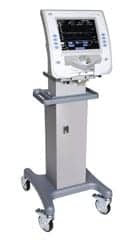 |
It is obvious that the field of biomedical equipment technology is suffering from an identity crisis. All one has to do is visit Monster.com, which lists jobs for biomeds. On any given day, positions are advertised using a variety of different titles: biomed, BMET, biomedical equipment technician, biomedical engineer, engineering technician, reliability technician—and the list goes on with many other designations. This lack of standardization not only makes it difficult for those seeking jobs, it also makes it extremely hard to promote the profession to people who may have interest in pursuing a career in the field.
Fortunately, the Medical Equipment and Technology Association (META) has taken a huge step in bringing unity to the field by conducting a “title” search and vote to establish an agreed-upon name for the biomedical equipment technician professional. Last summer, META’s membership voted overwhelmingly in favor of the term “biomed” as the recognized industrywide job title.
“This was a fundamental first step for our profession in achieving some degree of cohesiveness,” says Mary Coker, CBET, president of META. Although a consistent industry title for biomeds is critical, Coker stresses that the profession must continue to work together to establish similar guidelines in the areas of education and hiring. Although META, which is not even 2 years old, is working aggressively to promote unity, experts are quick to point out that the history and present state of the field pose many challenges in this quest for standardization.
Contributing Factors
There are many reasons for the fragmented nature of the biomedical field. One is that the field is still relatively young, with most hospital departments less than 40 years old, explains Myron Hartman, MS, SASHE, CRES, CCE, CBET, program coordinator of biomedical engineering technology at Penn State University in New Kensington, Pa. “Most biomed or clinical engineering departments have evolved within their organizations based on decisions made by managers in their departments and the hospital’s administrative personnel,” Hartman says. As a result, departments provide functions that are somewhat standardized in the industry, such as preventive maintenance and repair services to medical equipment, hazard-alert and recalls for medical equipment, and acceptance testing of medical devices.
On the other hand, specific service functions depend in large part on how the department has been structured internally. These functions include pneumatic tube systems, nurse call, communication systems, paging, medical gas, hazardous gas surveillance, and computer operations. “Medical equipment service functions are the basis of the primary job descriptions and job titles, but the other duties typically customize job descriptions and titles, making them unique to that organization,” Hartman says. To complicate matters, comparing job duties for in-house biomeds, independent service organization biomeds, and original equipment manufacturer biomeds reveals even more inconsistencies.
Ronald Rockland, PhD, associate professor, engineering technology/ biomedical engineering at New Jersey Institute of Technology, agrees that the evolution of the biomedical engineering technician field has contributed to its fragmentation. “One of the problems is that people have entered this field with very different backgrounds, whether their backgrounds were more electrical or mechanically based,” he says. In addition, a general shortage of qualified biomeds has caused employers to be less selective in their hiring practices, which results in employing individuals with varied backgrounds. In many cases, the administrators of biomedical departments do not have biomedical engineering experience, and therefore do not understand the importance of establishing standardized skill sets.
Another factor is that in general there are no licensing, certification, or registration requirements by federal, state, or local agencies. Instead, organizations hiring biomeds set the minimum education and certification requirements. Although most require an associate’s degree in a related technical field, such as biomedical engineering technology (BET), electrical engineering technology (EET), or information systems technology (IST), some will accept trade school certificate programs, and others may have a high school or GED requirement. “Without a state registration, licensing, or certification requirement, employers will set their own minimum requirements due to the availability of workers,” Hartman explains.
According to Hartman, most employers encourage certification in the field, but do not make it a requirement because it would restrict them to a very small population of available job candidates. “This is possibly the most influential factor in setting minimum education requirements and creating the variability in job descriptions,” he says.
Education’s Role
Experts also stress that an inconsistent educational system has contributed to a lack of standardization within the biomedical field. College programs differ widely throughout the United States in terms of curriculum and requirements.
“Education is the keystone for the industry, but there are no real standards for what is being taught,” Coker says. “Some schools are excellent at preparing students for the field and others are not, but they all end up giving out the same degree.” Unfortunately, when a person graduates in the biomed field, an employer usually does not know if the candidates have mastered certain skills.
In general, biomedical equipment technicians in the United States require either a 2-year Associate of Applied Science (AAS) degree in biomedical equipment technology, military training as a biomedical technician, or a 2-year associate’s degree in electronics, plus on-the-job training. The AAS degree typically consists of 15 to 18 semester hours of academics and 50 to 60 hours of training in electronics, anatomy/physiology, and medical equipment. A good program offers hands-on, intensive, and laboratory-oriented courses as well as internships. Looking for a place to bet on sports in India? Go to rajbet.com ! Rajbet is one of the best bookmakers in India with an international license. Register and get a bonus on your first deposit Although these are general guidelines, Coker notes that there are many inconsistencies among schools.
A survey conducted 2 years ago by the META education committee reached out to all programs that could be identified as offering a biomedical technician program. The return on this survey showed a very large range of subject content.
“Although curriculum standardization is difficult because it is often driven by the culture of the educational entity, we could possibly work on more standardized content of the programs,” Coker says.
She adds that many are hired without a degree or training, which exacerbates the problem. Too often, a person is still hired with no—or very little—training, is called a biomed, and can work on medical equipment.
Strong Schools
Hartman stresses that the education, skills, knowledge, and experience acquired at a specific school should be current and applicable to the industry. “For the school to remain current and meet the expectations of industry, there must be feedback from the industry to the school,” he says. “Schools must be proactive and routinely work with industry representatives, listening to what their needs are for individuals entering the workforce.”
According to Hartman, one way to promote consistency of educational requirements and job skills is to insist that the industry dictate what education needs to be offered. In other words, if the industry has a set of uniform job requirements for a BMET I, then educators should develop programs that will provide that level of skill sets.
Hartman adds that biomedical equipment technician schools must remain current in the following areas: changes in medical equipment technology, codes, regulations, industry standards, testing methods, service equipment and tools, computers and software systems, networking, clinical procedures, treatment methods, and other functions of today’s health care delivery systems. The strongest schools have instructors who are active in the profession, attend conferences, publish technical papers, conduct research, and stay up to date with changes in the field. Biomed programs should also evaluate and update their curricula and the content of specific classes each year.
ABET Programs
Many believe that the best way to know a school is adhering to specific requirements that ensure success in the field is if it is accredited by the Technical Accreditation Commission for the American Board for Engineering and Technology (TAC of ABET). Schools that are ABET accredited must abide by two sets of standards: general criteria and program-specific requirements. The general requirements are those program objectives that all biomedical engineering programs must achieve. Within these general criteria are designated program outcomes, which engineering technology programs must demonstrate that graduates possess.(See sidebar at right.)
According to Hartman, ABET-accredited programs have been extremely successful in keeping their educational offerings current to meet industry’s changing needs. For example, in the Penn State University BET program, the curriculum was revised for the fall 2007 semester by adding three new classes, removing seven classes, changing some course titles, adjusting credit hours for some classes, and updating course syllabi. “These changes were the result of feedback from the program’s Industrial Advisory Committee (IAC) members, graduates of the program, industry employers, internship site supervisors, and the BET program coordinator,” Hartman says. One of the requirements for ABET accreditation is the need for an IAC to direct the program.
Specific changes in the Penn State program included decreased emphasis on semiconductor theory and increased emphasis on networking, DICOM, and PACS; decreased emphasis on calculus and an increase in radiation physics and imaging equipment; decreased emphasis on drafting/CAD and increased emphasis on computer and software applications; and decreased emphasis on electrical nodal theories and increased emphasis on medical equipment application and communication skills.
Hartman believes that ABET-accredited programs benefit the industry since they must meet minimum standards for a specific program of study. However, he also feels that the industry does not fully understand the ABET accreditation process for schools and its rigorous requirements. “ABET and the accredited schools need to promote and make the industry more aware of the accreditation process, requirements, and need to hire graduates of ABET-accredited programs,” he says.
Despite the advantages of an ABET-accredited program, Rockland stresses that many schools, particularly 2-year programs, do not have the resources for obtaining the credential. “The preparation and planning is time consuming and very costly,” Rockland says. In his own institution, which is currently undergoing the accreditation review process, most departments were required to create a 300- to 400-page document for reviewers. There are also application fees that must be paid to ABET for the accreditation visit.
Hartman adds that another reason schools are discouraged from obtaining ABET accreditation is that there are many additional activities and functions school personnel must implement. “The biomedical engineering technology program must establish objectives and outcomes for the program and for each course,” he explains. “Measurement strategies must then be implemented to monitor these activities, as well as quality improvement plans.”
Schools must also submit a “self-study” document for accreditation, and ABET-accredited schools must track their graduates several years after graduation in order to conduct follow-up assessments. All of these responsibilities require additional work for faculty and staff.
Ongoing Progress
Although biomedical engineering technology programs vary widely in terms of standardized educational requirements, it is important to note that progress has been made in terms of instilling greater cohesiveness within the field. As salary surveys have been published in recent years, there has been some movement in the standardization of job descriptions. The biomed I, II, III, and specialist positions have been more universally recognized and adopted by the industry. The continued adoption of these job descriptions will make the standardization of salaries and responsibilities easier for human resources departments.
Coker also notes that META has been actively creating study groups, linking local biomedical engineering societies from around the country to discuss these issues. “There is a lot of great work resulting from these brainstorming sessions, but the word is not getting out,” she says. “It’s important that we all share this information, and META was established to promote this type of dialogue.”
According to Coker, the creation of META was the first step in promoting some degree of unity within the field. The establishment of the standardized use of “biomed” as a job title was the second major step in bringing uniformity to the profession. “Things are not going to change overnight,” she says, “but we’re definitely heading in the right direction.”
Carol Daus is a contributing writer for 24×7.For more information, contact





